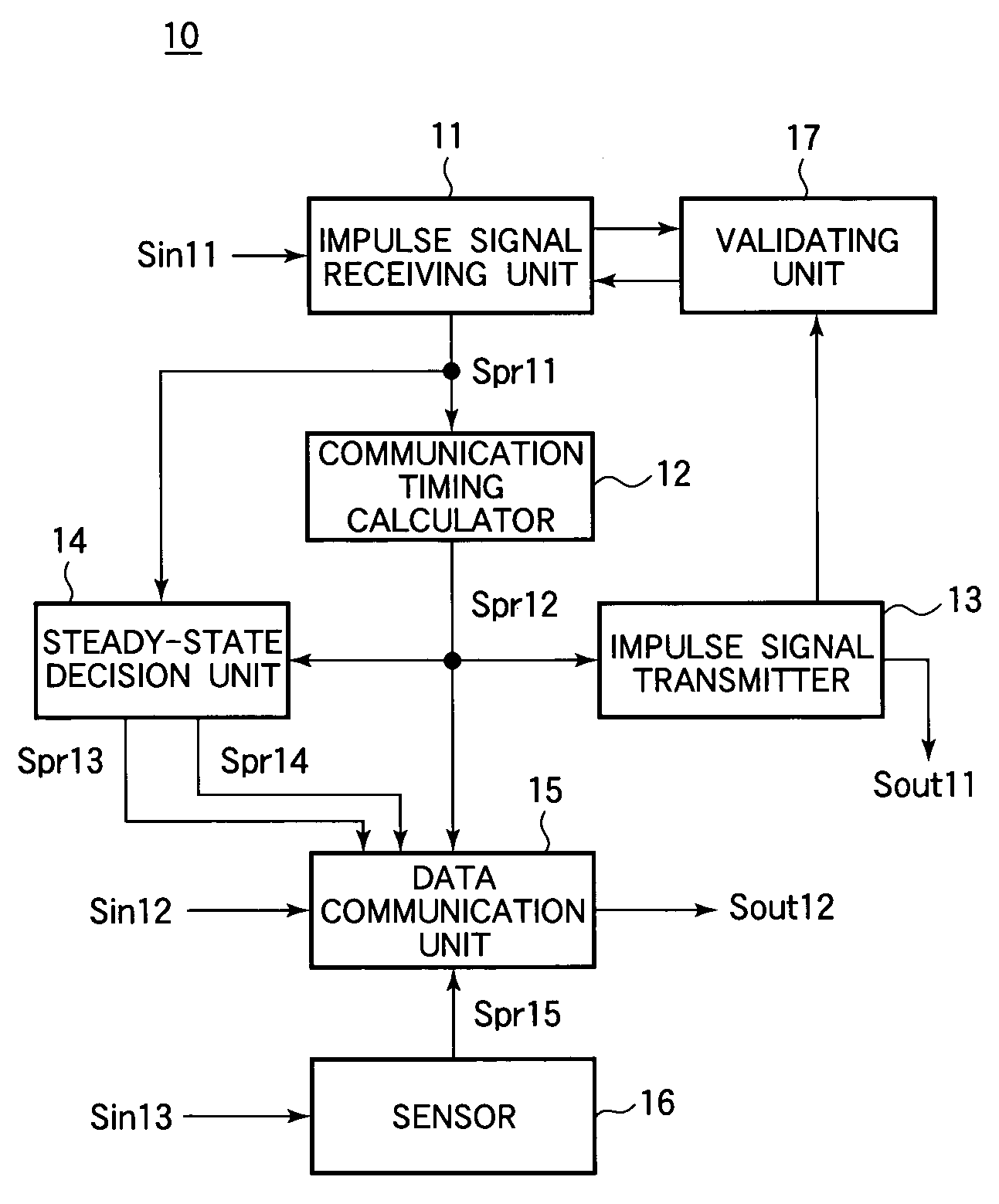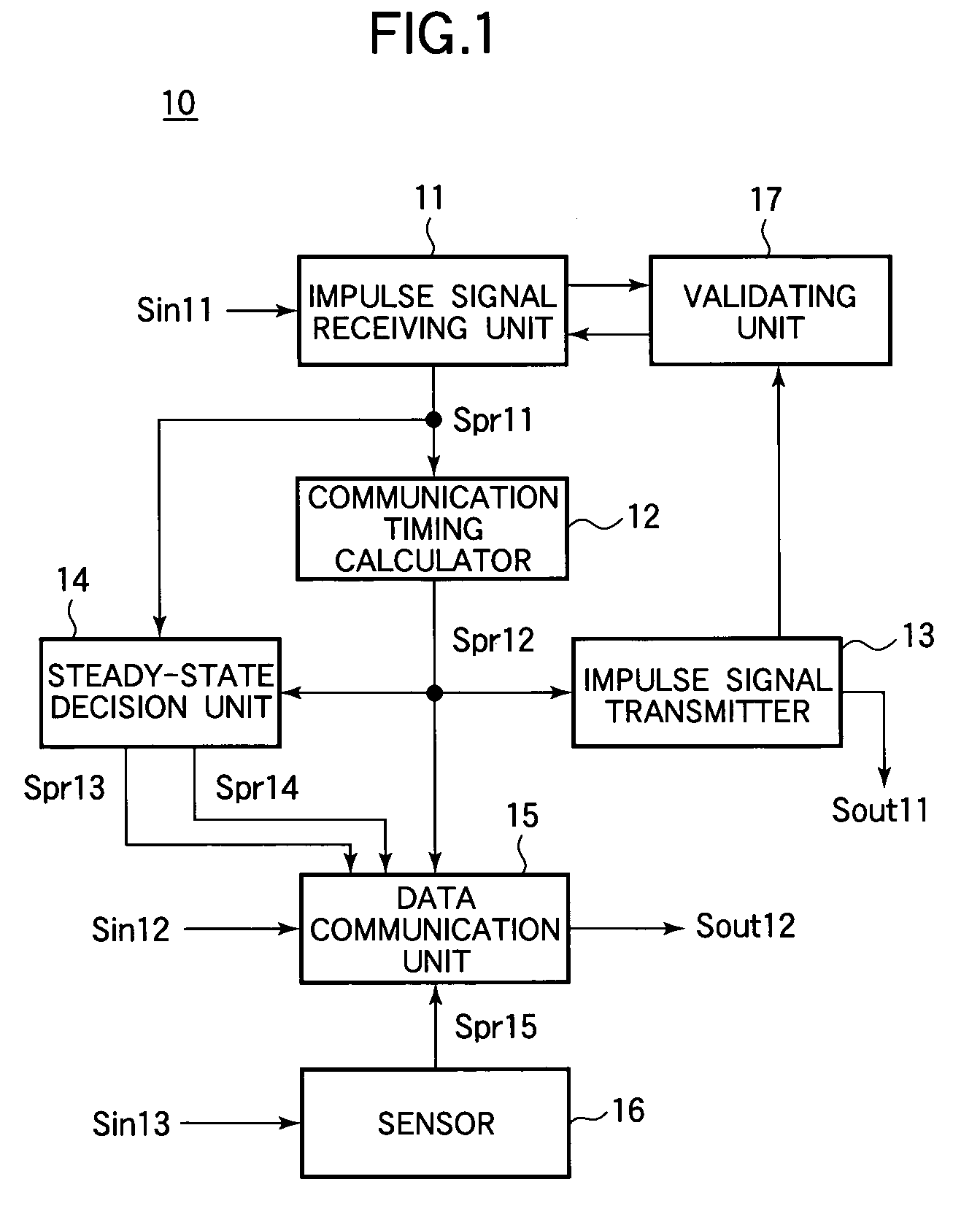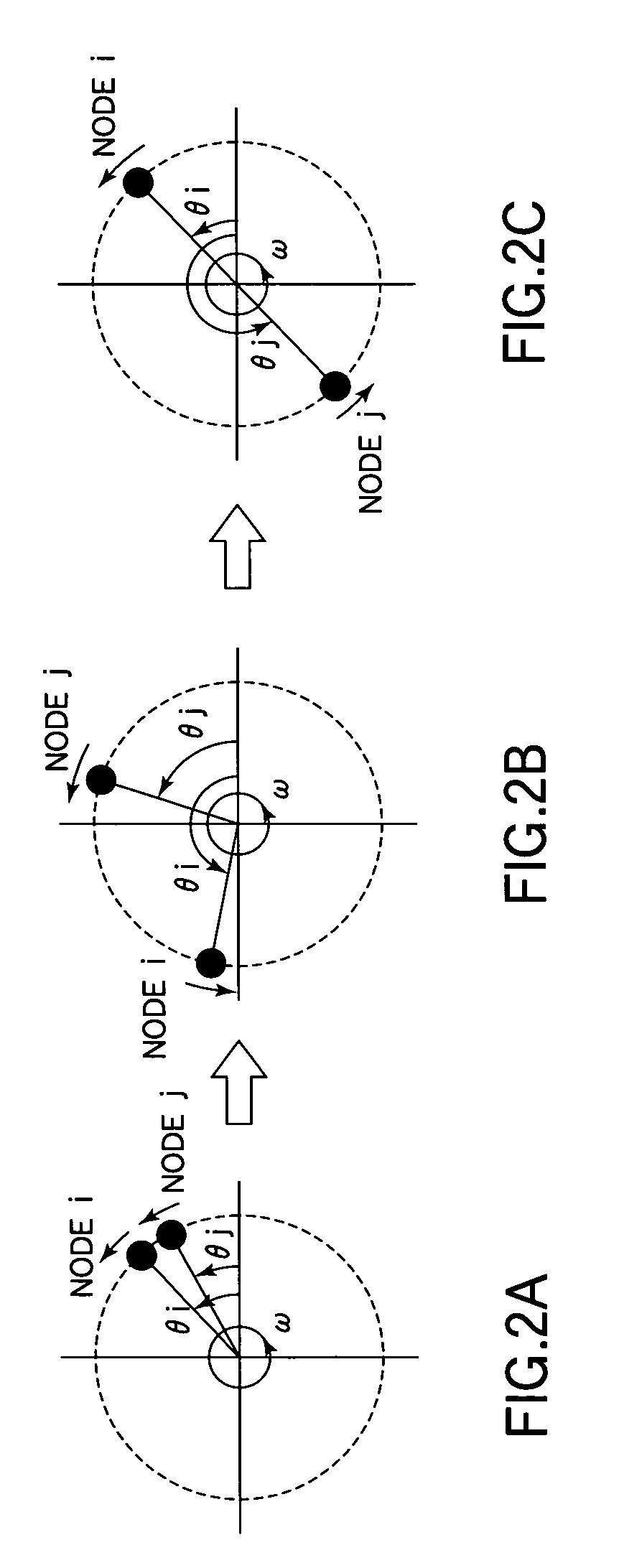Communication timing control apparatus, communication timing control method, node, and communication system
a communication timing control and control method technology, applied in the field of communication timing control apparatus, communication timing control method, node, communication system, etc., can solve the problems of complex process by which time slots are assigned dynamically to nodes, affecting the operation of communication systems, and restricting the number of channels that can be used simultaneously. , to achieve the effect of avoiding signal collision
- Summary
- Abstract
- Description
- Claims
- Application Information
AI Technical Summary
Benefits of technology
Problems solved by technology
Method used
Image
Examples
first embodiment
[0041]In the first embodiment, each of the nodes is assumed to remain substantially stationary during communication.
[0042]Each of the plurality of nodes has the functional block structure shown in FIG. 1. The node 10 in FIG. 1 comprises an impulse signal receiving unit 11, a communication timing calculator 12, an impulse signal transmitter 13, a steady-state decision unit 14, a data communication unit 15, a sensor 16, and a validating unit 17. The impulse signal receiving unit 11, communication timing calculator 12, impulse signal transmitter 13, steady-state decision unit 14, and validating unit 17 operate as a communication timing control apparatus.
[0043]The impulse signal receiving unit 11 receives input impulse signals Sin11 transmitted by neighboring nodes. The impulse signals in the first embodiment are timing signals having, for example, a Gaussian waveshape, not including any data or address information. The neighboring nodes include, for example, all nodes within communicat...
second embodiment
[0092]In the first embodiment, detection of invalid impulse signals is contingent on the nodes remaining generally stationary. The second embodiment enables invalid impulse signals to be identified even if some or all of the nodes move. In the second embodiment each node counts the number of impulse signals that have been transmitted by the node itself and all its neighboring nodes and adds the current count value (referred to as count information) to the next impulse signal it generates and transmits.
[0093]Referring to FIG. 6, in a node 10A in the second embodiment, the validating unit in the first embodiment is replaced by a count validating unit 18, and the functions of the impulse signal receiving unit 11 and the impulse signal transmitter 13 are slightly altered. The other constituent elements are the same as in the first embodiment, so descriptions will be omitted.
[0094]In the second embodiment, as in the first embodiment, the impulse signal receiving unit 11 receives an outpu...
third embodiment
[0115]The count information added to each impulse signal in the second embodiment can be regarded as a type of identifying (ID) information that varies regularly from one impulse signal to the next. The third embodiment also adds ID information to the impulse signals, but varies the ID information irregularly.
[0116]In the third embodiment, each node generates random ID information to add to the output impulse signals it transmits. A node receiving an impulse signal extracts the ID information and decides whether or not the input impulse signal is valid by comparing the extracted ID information with internally retained ID information. If the input impulse signal is valid, the node retains the extracted ID information for a predetermined period of time.
[0117]Referring to FIG. 8, in a node 10B in the second embodiment the count validating unit in the second embodiment is replaced by an ID validating unit 19 and an ID generator 20, and the functions of the impulse signal receiving unit ...
PUM
 Login to View More
Login to View More Abstract
Description
Claims
Application Information
 Login to View More
Login to View More - R&D
- Intellectual Property
- Life Sciences
- Materials
- Tech Scout
- Unparalleled Data Quality
- Higher Quality Content
- 60% Fewer Hallucinations
Browse by: Latest US Patents, China's latest patents, Technical Efficacy Thesaurus, Application Domain, Technology Topic, Popular Technical Reports.
© 2025 PatSnap. All rights reserved.Legal|Privacy policy|Modern Slavery Act Transparency Statement|Sitemap|About US| Contact US: help@patsnap.com



